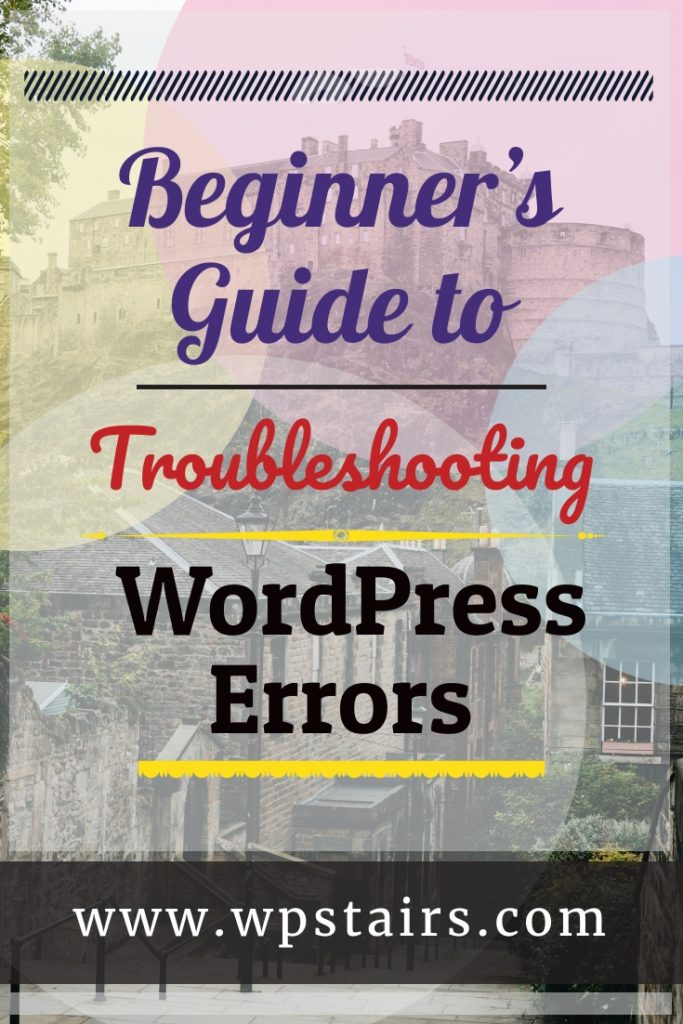Reading this means that you are among the big fan of WordPress and it’s quite easy to find why. The Content Management System (CMS) is the strong and feature-packed. When the platform is usually rock solid, getting into a bug or the error is unavoidable giving its complication and elasticity. Learning the basics knowledge of the WordPress troubleshooting is therefore found vital. By coming to know that how to solve some of WordPress’ most occurring errors, you’ll have the access to manage any bugs that you may run without calling for any support. It’s that type of skill that may save you so many difficulties down the line. Reading this article, we will be able to explore three of the most common errors, before going into the fundamentals troubleshooting wordpress errors.
The Three Most Occurring WordPress Errors
WordPress errors occurs in many ways and sizes likewise as soon as maintenance mode us bugged, or if the connection is timed out, it messages. However, to protect them all it would be taking a perpetuity, now let’s focus with the three most occurring errors that you’ll come around
.
404 / Page Not Found
Errors like 404 are the most occurring and can easily be fixed of bunch. They occur when somebody browses for the URL which cannot be available on your website, and there have been so many reasons for it to be occurred broken links and typos in the address like an example. Fixing and Finding the broken links takes some seconds, but you require placing them at first, and also bearing in mind the security problems that are arise for both of you and visitors. Taking a deep look on how to solve 404 errors, read out this article carefully for more information.
White Screen of Death (WSoD)
The WSoD, a dramatically-named bug also occurs to be the extremely annoying ones out of there. If the website abruptly starts to show a white screen, you must have been hit. The WSoD is mostly happened by auto up gradation problems, maintenance errors, or compatibility afflictions with plugins. All of these potential effects to make it slightly of nightmare for troubleshoot, especially when you find no clue so as to the reason.
[elementor-template id="8247"]Internal Server Errors
In comparison with the WSoD, the internal server errors are mostly recognizable when so ever it occurs, you’ll also be received by a massive Internal server error message, but there’s no mistake at all. The actual problem occurs at the troubleshooting point; subsequently, there is a wide range of factors which may create internal server errors. Luckily, we’ve already put together a detailed guide on this subject; you may thank us later on.
How to Troubleshoot WordPress Errors
Before we make the hands dirty with so many WordPress troubleshooting, you are advised to read that how to create the backup of your site at first. Actually, you must always backup the site prior tinkering with the WordPress installation, in the case the worst may happen – you can also potentially lost your complete site. By far, plugin and theme unsuitability is the main reason of errors, by which they should be the first stop that when WordPress troubleshooting. Though, there have been other aspects which can shake your installation, with memory bounds and damaged core files. You may also carry out the following steps by using the web host’s file manager, here we would recommend to use File Transfer Protocol (FTP) client. When you’re up to the mark speed, troubleshooting begins.
Disable Plugins via FTP
Initially, open the FTP client and then log in to the site by using the credentials that you have received from web host while signup. And then navigate to public_html > wp-content. Here You’ll be able to find numerous folders inside
Then press the Right-click on that plugins folder, click the Rename option, and then change to anything that you would like. We suggest choosing an associated name so that you will not be confused in the folder for later on:
This is the simple action which will disable the plugin at your WordPress site. Now, navigate to the website to ensure weather the error which you experienced exists. If it’s there, then we may remove plugin errors as the foundation of the issue. At the other side, if error is vanished, we would require to find the exact plugin which is causing it. Now change name of plugins folder back with its original name, now open, in this folder you’ll get a folder for every plugins. To have the most offensive one, just rename every folder of plugin as above, and now check if error exists. If it does not exist, you’ll may easily know that which plugin was actually causing it. This is the point, where you’ll require to contact developer for solved it or may be find the alternative.
Disable The Themes Via FTP
If by disabling the plugins your issue didn’t solve, we’ll require to carry out a same troubleshooting process with your themes. Previously in your FTP client, place and enter them in the themes folder which is inside wp-content.
Rather than disabling the themes in the random order as it was done with your plugins, the initial stop here must be your active theme. Change the name of folder to disable it, now check does the error exist. If it is so, recap the procedure for every theme into the folder unless you are able to find the culprit. Again with plugins, you’ll require to contact with the developer to solve the problem, but giving the vital role in design of site, you’ll absolutely require to find the alternative. If disabling plugins and not the themes works, we will have to throw almost in the towel. Though, we may collect some of the valued vision by allowing error logs.
Enabling the Error Logs
Error logs actually enable the WordPress to install and save a record for each time when your site finds an issue, and so they’re amazingly helpful from a troubleshooting point of view.
To allow error logs, direct to public_html in the FTP client, find wp-config.php, now right-click, now choose the Edit function. Add these following three lines at the end of the file by using your preferred text editor:
define( ‘WP_DEBUG’, true );
define( ‘WP_DEBUG_DISPLAY’, false );
define( ‘WP_DEBUG_LOG’, true );
Now save the changes you made, and then reload the site for replicating the error. A log for this must occur in the new debug.log file placed in wp-content. You may have easy access of the file by using a text editor, or use the data from either Google, or find it on a local expert to do WordPress troubleshooting at your behalf.
Conclusion
Training the fundamentals of WordPress troubleshooting won’t be so much handy when solving the errors, it’ll support you to know the its internal workings. It means that if you go into the errors (with those we didn’t had the chance to mention here), you’ll be able to know that how to identify the problem and rectify.
Any time you go in a WordPress error which confuses you, recall to:
- Back up the site prior taking to any extreme measures.
- Manually turn off your plugins and themes with FTP to rule out the errors.
- Turn on the WordPress error logs to look for extra clues.
- If all of the above doesn’t satisfy, try to contact a WordPress professional.

Pin It! 
Pin It!




1 comment
ΝΤΕΤΕΚΤΙΒ
Hi there! I could have sworn I’ve been to this website
before but after browsing through some of the post I realized it’s new to me.
Anyways, I’m definitely happy I found it and I’ll be
bookmarking and checking back often!